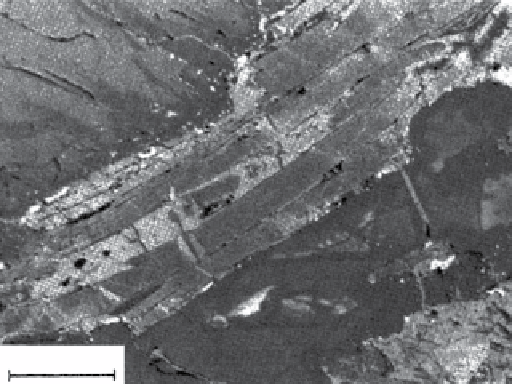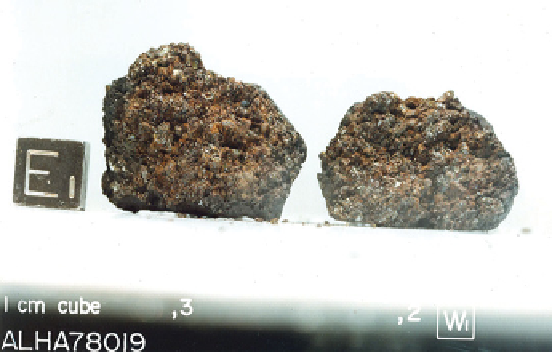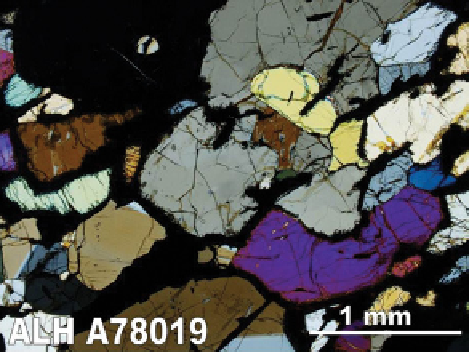Geology Reference
In-Depth Information
Ureilite
30.27 g
Found November 23, 1978
3.0 × 2.5 × 3.0 cm
Weathering = B/C
Ureilites are coarse-grained ultramafic rocks containing olivine and
pigeonite. graphite is also present in many ureilites, and the Fe-Mg-o
relation in this group of meteorites indicates equilibration at high temper-
atures in the presence of C at some pressure (50 bar) within an asteroid-
sized body. Because ureilites also define an unusual oxygen isotopic
composition that has a mass-independent slope of 1:1 on a three-isotope
diagram for oxygen, clues to their origin lie in an explanation that includes
silicates, graphite, and oxygen.
Albitic lithology
Ureilite parent body
Explosive volcanism
Olivine-augite lithology
15 bars
mg
92
mg
91
opx
opx- bearing
paracumulate
mg
86
mg
86
Pigeonite
Augite-bearing
cumulates and
paracumulates
Olivine-pyx
residues
mg
76
100 bars
mg
76
Augite
200 bars
mg
65
250
µ
mg
65
Plate 44
MiNERALogy
SigNiFiCANCE
ALH A78019 contains Fo
77
olivine and En
72
pigeonite
and minor amounts of metal, sulfide, and graphite.
olivine and pigeonite form triple-junction boundaries.
graphite occurs as laths interstitial to the silicates (left,
[291]). Metal-sulfide-graphite veins occur in fractures
and cleavage planes.
ALH A78019 represents a very low-shock-state ureilite,
as graphite is well preserved. Many ureilites contain dia-
mond, which is thought to have formed by shock
processes. The carbon-bearing phases and Fe-Ni-Si
metallic alloys found in ALH A78019 allow a detailed
understanding of the redox history of a portion of the
ureilite parent body (right, [295]).
References [291-311]




